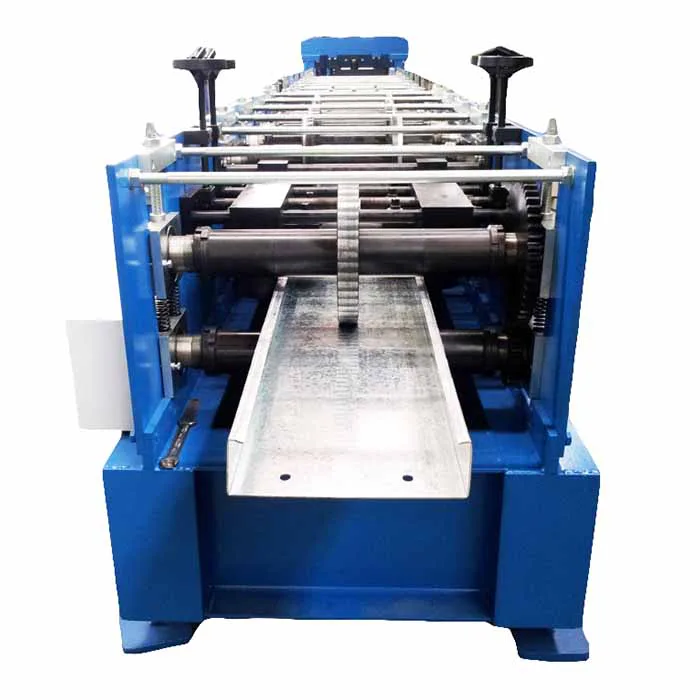
Understanding the Manufacturing Process of Metal Plate Bending Machines
- By:Metmac
- 2024-09-05
- 196
In the realm of metalworking, precision and efficiency are paramount. Metal plate bending machines, instrumental in shaping metal sheets into desired forms, undergo a complex manufacturing process. This article will delve into the intricate steps involved in producing these remarkable machines.
Raw Material Acquisition and Preparation
The manufacturing process commences with procuring high-quality raw materials. Structural steel, alloy steel, and aluminum are common choices for metal plate bending machines due to their strength and durability. These materials are cut to precise dimensions and undergo surface treatment to remove any imperfections.
Fabrication
The fabrication stage involves shaping the raw materials into various components. Heavy-duty presses and CNC (computer numerical control) machining centers are employed to punch, shear, and bend metal sheets. Laser cutting technology ensures intricate and precise cuts with minimal distortion. Welding is meticulously performed to join components securely.
Assembly and Calibration
The individual components are meticulously assembled into a cohesive unit. The frame, hydraulic system, and electrical components are carefully integrated. Advanced assembly techniques, such as modular construction, streamline the process and enhance precision. Once assembled, the machine undergoes rigorous calibration to ensure optimal performance and accuracy.
Hydraulic System Installation
The hydraulic system, crucial for generating the bending force, is precisely installed. Hydraulic cylinders, pumps, and valves are interconnected to provide controlled and powerful bending action. Pressure sensors and control systems ensure precise pressure regulation and smooth operation.
Electrical Installation and Programming
The electrical system powers and controls the machine’s various functions. Electrical components, such as motors, sensors, and control panels, are installed and programmed. The machine’s operating parameters, including bending force, bending speed, and angle, are meticulously programmed to achieve the desired bending results.
Testing and Quality Control
Before delivery, the metal plate bending machine undergoes rigorous testing and quality control procedures. The machine is operated under varying load conditions to verify its performance and accuracy. Non-destructive testing methods, such as ultrasonic testing and magnetic particle testing, ensure the structural integrity of critical components.
Maintenance and Support
To ensure optimal performance and longevity, metal plate bending machines require regular maintenance and support. Skilled technicians perform periodic inspections, lubricate components, and recalibrate systems as necessary. Remote monitoring and diagnostics enhance machine uptime and minimize downtime.
The manufacturing process of metal plate bending machines is a complex and multi-faceted endeavor. By understanding the intricacies of this process, manufacturers can appreciate the quality and precision that goes into these remarkable machines. From raw material sourcing to final testing, every step is meticulously executed to deliver machines that empower metalworkers to transform metal sheets into a wide range of useful forms.
-
Metal Sheet Forming Machine: The Engine of Modern Fabrication and the METMAC Standard
2025/12/30 -
Laser Cutting Machine for Steel Plate: Precision Redefined for Modern Fabrication
2025/12/30 -
Metal Curving Machine: Shaping Strength with Precision and the Art of METMAC Engineering
2025/12/30 -
Shear Metal Cutting Machine: Precision, Power, and the METMAC Standard
2025/12/30
-
Advanced Sheet Metal Rolling, Laser Cutting, and Folding Machines for Precision Fabrication
2025/10/31 -
High-Performance Sheet Metal Bending and Cutting Machines for Modern Fabrication
2025/10/31 -
High-Quality Sheet Metal Equipment for Sale: Efficient Solutions for Modern Manufacturing
2025/10/31 -
High-Performance Sheet Metal Equipment for Sale: Forming and Shearing Solutions for Modern Fabrication
2025/10/22
-
A Guide to the Latest Innovations in Sheet Metal Folding Machines
2024/11/29 -
Key Features to Consider When Investing in a Sheet Metal Folding Machine
2024/11/28 -
Enhancing Precision with Advanced Sheet Metal Folding Machines
2024/11/27 -
How to Choose the Right Sheet Metal Folding Machine for Your Workshop
2024/11/26







